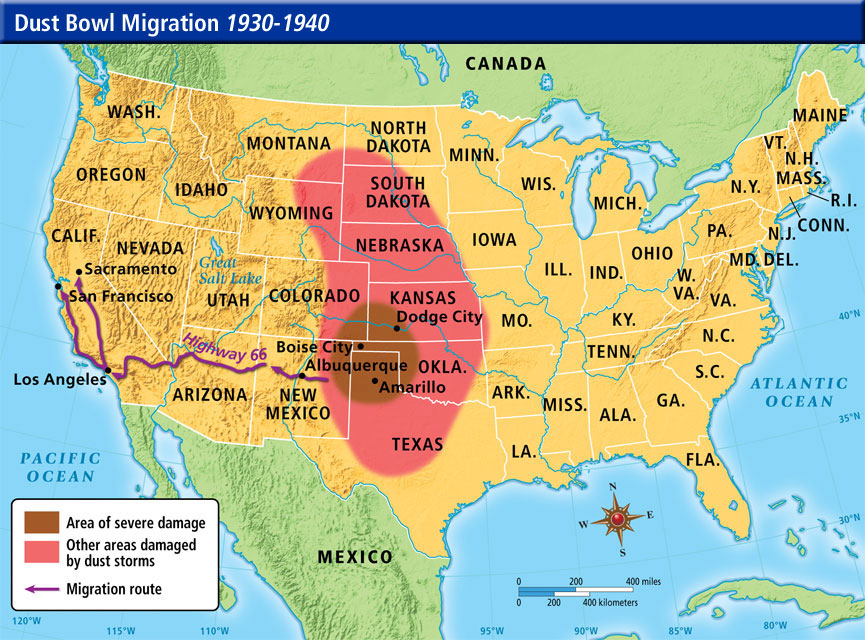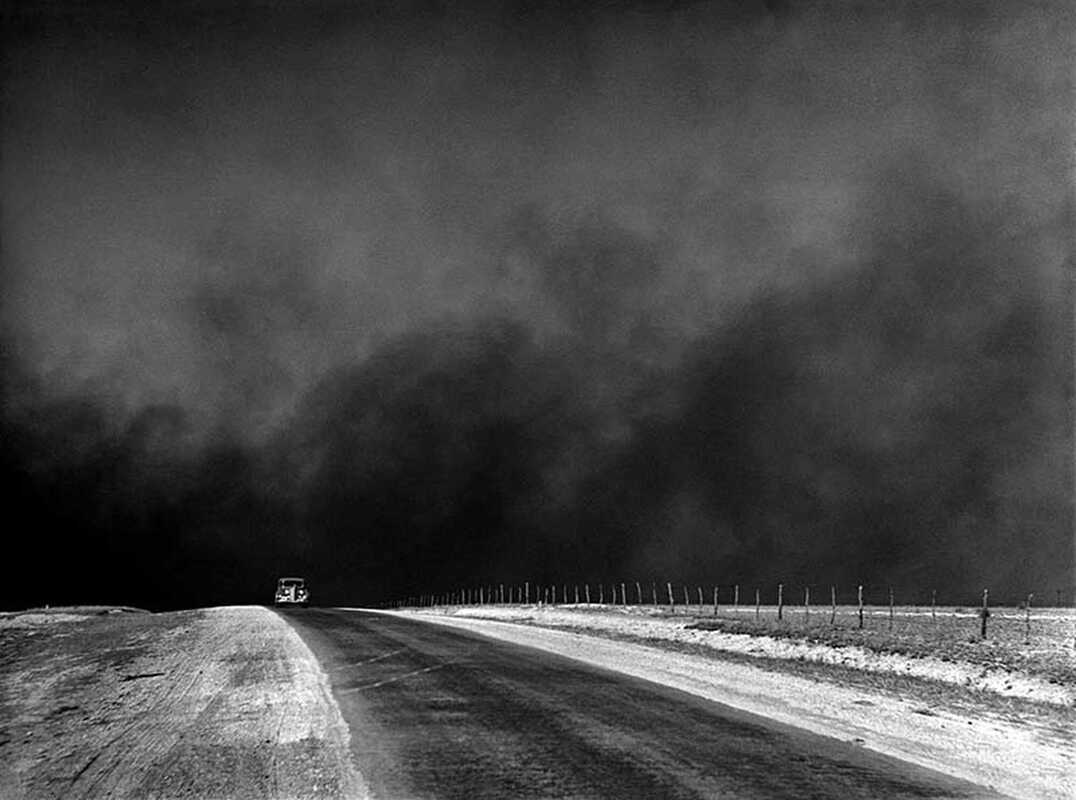1| The Plight of Farmers during the Great Depression
In the early 1930s prices dropped so low that many farmers went bankrupt and lost their farms. During the Great Depression, it is estimated that about 2 million bankrupt farmers and unemployed people became « hobos ».
Natural disasters compounded the problems, and the plight of farmers worsened with the onset of the Dust Bowl.
2| The Dust Bowl
The Dust Bowl was the name given to the drought-stricken Southern Plains region of the United States, which suffered severe dust storms during a dry period in the 1930s. In these areas, years of over farming left the land in poor condition. Furthermore, severe drought turned the soil into dust causing crops to die and dust storm (often called ‘black blizzards’) to occur.
3| Okie Migration
Roughly 2.5 million people left the Dust Bowl states—Texas, New Mexico, Colorado, Nebraska, Kansas and Oklahoma—during the 1930s. It was one of the largest migrations in American history. Oklahoma alone lost 440,000 people to migration. Many of them, poverty-stricken, travelled west looking for work. From 1935 to 1940, over 250,000 Oklahoma migrants moved to California - although California was also suffering from severe droughts and the effects of the Great Depression at the time. These Dust Bowl refugees were labelled “Okies.”, regardless of whether they hailed from Oklahoma or another state. In his novel, The Grapes of Wrath (published in 1939), John Steinbeck depicted the plight of Oakies and other farm workers who headed west to escape the Dust Bowl.
|
Oklahoma is a Choctaw Indian word that means “red people.”
It is derived from the words for people (okla) and red (humma). |
| |||||||



